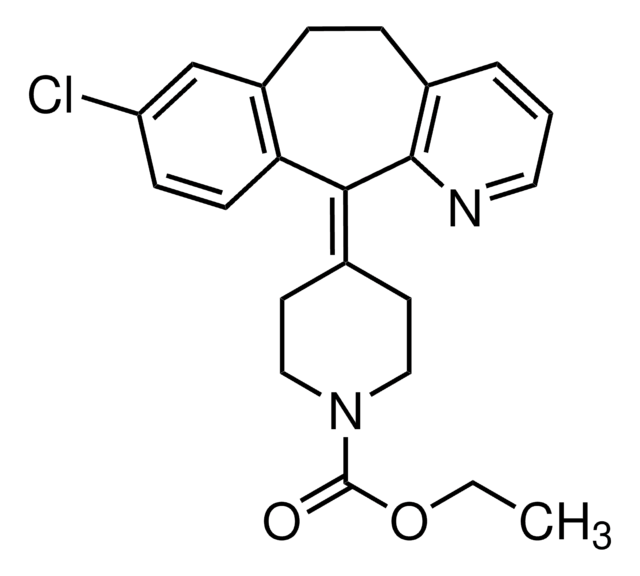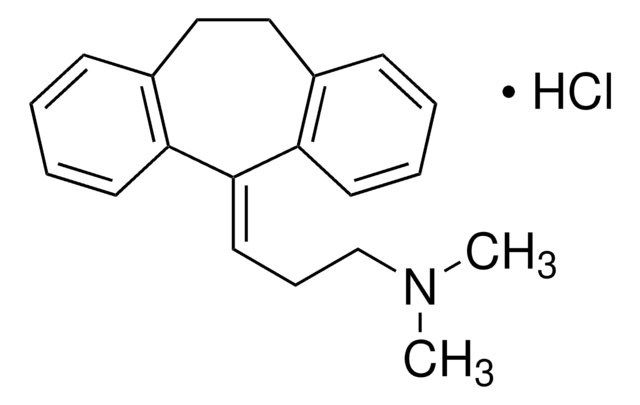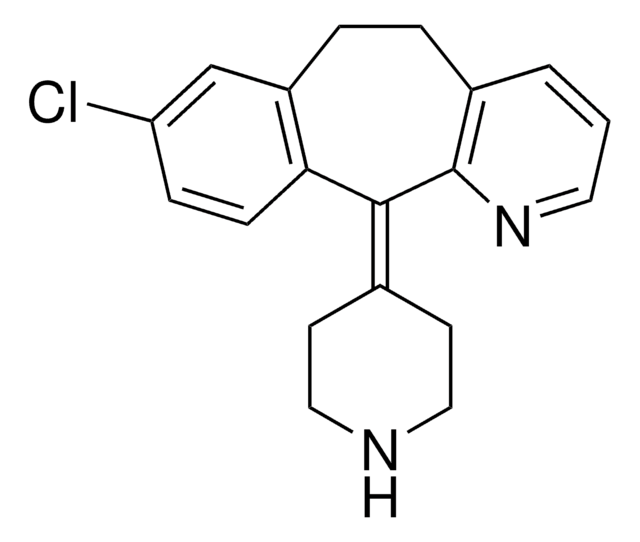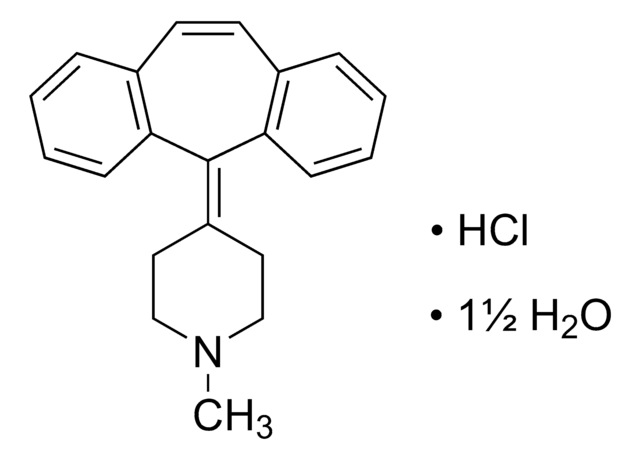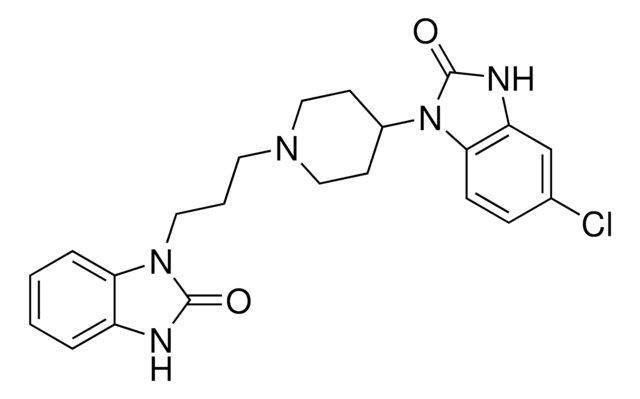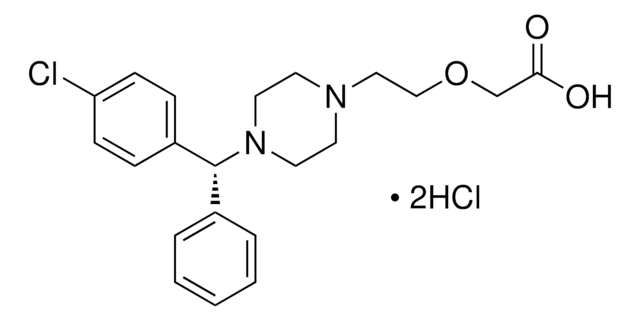L9664
Loratadine
≥98% (HPLC), powder
Synonym(s):
4-(8-Chloro-5,6-dihydro-11H-benzo[5,6]cyclohepta[1,2-b]pyridin-11-ylidene-1-piperidinecarboxylic acid ethyl ester, Loratidine
About This Item
Recommended Products
Quality Level
Assay
≥98% (HPLC)
form
powder
color
white
solubility
DMSO: soluble 50 mg/mL
H2O: insoluble
originator
Schering Plough
storage temp.
2-8°C
SMILES string
CCOC(=O)N1CC\C(CC1)=C2/c3ccc(Cl)cc3CCc4cccnc24
InChI
1S/C22H23ClN2O2/c1-2-27-22(26)25-12-9-15(10-13-25)20-19-8-7-18(23)14-17(19)6-5-16-4-3-11-24-21(16)20/h3-4,7-8,11,14H,2,5-6,9-10,12-13H2,1H3
InChI key
JCCNYMKQOSZNPW-UHFFFAOYSA-N
Gene Information
human ... CYP3A4(1576) , HRH1(3269) , KCNH1(3756) , KCNH2(3757) , PTAFR(5724)
rat ... Hrh1(24448)
Looking for similar products? Visit Product Comparison Guide
Biochem/physiol Actions
Features and Benefits
related product
Storage Class Code
11 - Combustible Solids
WGK
WGK 2
Flash Point(F)
Not applicable
Flash Point(C)
Not applicable
Personal Protective Equipment
Choose from one of the most recent versions:
Already Own This Product?
Find documentation for the products that you have recently purchased in the Document Library.
Customers Also Viewed
Our team of scientists has experience in all areas of research including Life Science, Material Science, Chemical Synthesis, Chromatography, Analytical and many others.
Contact Technical Service